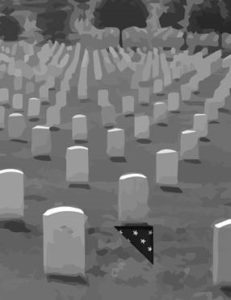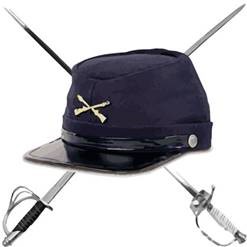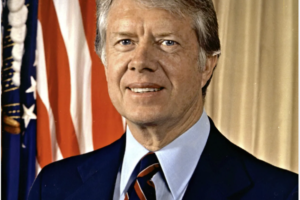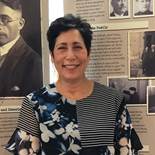There is no church here, but “the brave men, living and dead, who struggled here, have consecrated” this ground.

On 43 Ashford Avenue in Dobbs Ferry, on nearly 3 acres of land, stands a peculiar sight, a cemetery named for a church, yet there is no church on this ground. Even if a church stood there, the name of the cemetery would not match the name of the church, for surely, no one would actually name their church The Little White Church. Stranger still, is the fact that this tiny cemetery named for a church which is actually somewhere else in Greenburgh, somehow appears on Westchester County’s Inventory of Historic Places. Why on earth?
How did a cemetery come in to existence which is named for an absent church and why is it on Westchester County’s Inventory of Historic Places? These are the questions this article will answer.
A cemetery named for a church, but no church
The land on which this cemetery now stands once belonged to Dirck Storm, who at some point in the 1800s, sold it to Martin and Rebeccah Lefurgy. In 1823 the couple sold it to a group of Presbyterian ministers looking to form a church. Two years later, they officially founded their church. At the time of its founding the congregation consisted of only six members.
The name of this church was the South Presbyterian Church of Greenburgh, which still exists today, although at a different location. Its members gave it the nickname The Little White Church. In 1842, Martin and Rebeccah Lefurgy’s son, Isaac, gave the church an additional half acre. The church conducted religious services and burials on the property from the time of its founding until 1869 when it moved to a new location on 515 Broadway.
The building was torn down in 1883 and the property was then sold to Dr. Champion Judson who on his death deeded it to The Village of Dobbs Ferry. This is how a cemetery named for a church came to exist in the absence of a church. But why is it on the Westchester County’s Inventory of Historic Places?
Why is it on the Westchester County’s Inventory of Historic Places?
This question was answered long ago in one of the most famous speeches in American History.
“Now we are engaged in a great civil war…We are met on a great battle-field of that war. We have come to dedicate a portion of that field, as a final resting-place for those who here gave their lives, that that nation might live.
It is altogether fitting and proper that we should do this. But, in a larger sense, we cannot dedicate, we cannot consecrate—we cannot hallow—this ground. The brave men, living and dead, who struggled here, have consecrated
it far above our poor power to add or detract.”
Abraham Lincoln, November 19, 1863
President Lincoln had it right in his “Gettysburg Address,” Civil War veterans do indeed consecrate any ground they are buried in, and while the Little White Church Cemetery is not a Civil War battlefield, like Gettysburg, numerous Civil War Veterans are buried there. For that reason a plaque was dedicated to their memory and placed in the cemetery in 1904, and it is also for that reason that in 1991 it was added to Westchester County’s Inventory of Historic Places. Here are the stories of just a few of the veterans:

Brigadier General James Bowen
General James Bowen was born in 1808. On October 11th, 1862, he enlisted in the Union Army. Unlike most soldiers fighting for both the Union and the Confederacy which were either, West Point graduates in the case of officers, or combat veterans of the Mexican War, in the case of most enlisted men, James Bowen had no previous military training or experience prior to his civil war service. He was made a Brigadier General solely because of his close friendship with President Lincoln’s Secretary of State William Seward.
This may strike readers as odd, however making people generals not based on their skill in combat, but based instead on their political connections was President Lincoln’s habit. This habit of Lincoln’s nearly cost the Union the war. Even the West-Point educated Generals in Chief of the Union Army: General Winfield Scott (in command July 5, 1841-November 1, 1861), General George B. McClellan (in command November 2, 1861 – March 11, 1862) and General Henry W. Halleck (in command July 23, 1862 – March 9, 1864) lacked actual combat experience and were appointed based on their close friendship with President Lincoln. For example, General Halleck was a military scholar during the Mexican War whose most significant contribution to the war effort was translating Jomini’s Vie Politique et Militair, a book on military tactics written by Napoleon, into English, and General McClellan was also involved in the Mexican War, in a non-combat role. He was part of the Army Corps of Engineers. Only after many costly defeats, did Lincoln finally see the error of his ways and put General Ulysses S. Grant, who had fought in the Battle of Shiloh and led troops in that engagement, in charge. This was not until March of 1864.
Returning to Bowen, he did not serve in combat, instead he was the Provost Marshall of New Orleans from 1862-1864. He was honorably discharged on July 27th, 1864, and died on September 29th, 1886.
Captain Geraidus P. Hillman of the 5th Infantry New York Volunteers
This soldier’s records are incomplete, but here is what we do know based on his service Card. He was born sometime in 1833 in New York City. On April 25th, 1861, he enlisted in the Union Army. During the First Battle of Bull Run, which took place July 16th-22nd 1861, he took part in the Occupation of Arlington Heights. He was honorably discharged from the Union Army on August 7th, 1861. He died on October 6th, 1880.
Private Isaac Taylor of the 6th Infantry New York
This soldier’s records are also incomplete. He was born sometime in 1818 at an unknown location. He enlisted on August 3rd 1862. He fought in the Battle of the Wilderness on May 5–7, 1864. Perhaps it was there that he lost interest in land warfare, and felt the call of the sea, because while his discharge from the military isn’t recorded, his transfer from the Union Army to The United States Navy is. He died on February 22, 1887.
Private William O’Brien of the 6th Artillery New York
This soldier’s records are also incomplete. He was born sometime in 1836 at an unknown location. He enlisted on August 21st, 1862. He fought in The Mine Run Campaign in Orange County Virginia (November 27 – December 2, 1863). He did not survive the campaign, but he wasn’t killed in combat. He died on May 7th, 1863 in Harpers Ferry, Virginia of disease. During the Civil War, Harpers Ferry was in Western Virginia, the only part of the state loyal to the Union. Today that part of what was Virginia is now the State of West Virginia.
Corporal John McGullough of the 6th Artillery New York
This soldier’s records are also incomplete. He was born sometime in 1844 in an unknown location. He enlisted on August 22nd, 1862, the day after William O’Brien. Since they were in the same regiment, and enlisted a day apart, and were only one rank apart, chances are high that they knew each other. He fought in the Assault on Petersburg, on June 15-18, 1864 and in The Battle of Cold Harbor from May 31 – June 12, 1864. His date of death is unknown as is the precise cause, but it is certain that he did not die in combat because the Civil War ended on April 9, 1865 and his date of discharge was June 28th, 1865.
Private Charles O’Brien of the 37th Infantry New York
This soldier’s records are also incomplete. He was born sometime in 1838 in New York City. He enlisted on May 9th, 1861. He was wounded in action at the Battle of Williamsburg on May 5th, 1862. He was honorably discharged on October 7th, 1862. All details about his death are unknown.







Great research job, Riley and Felicia! I was glad to help out.
Thank you for reading our March 15 article about the Little White Church cemetery in Dobbs Ferry. I learned some more from your article.